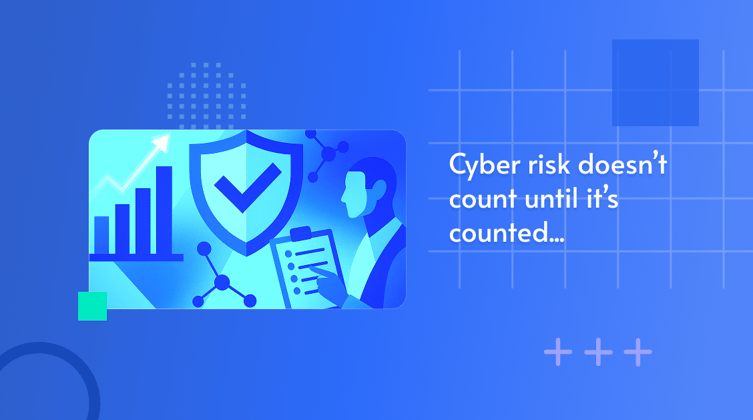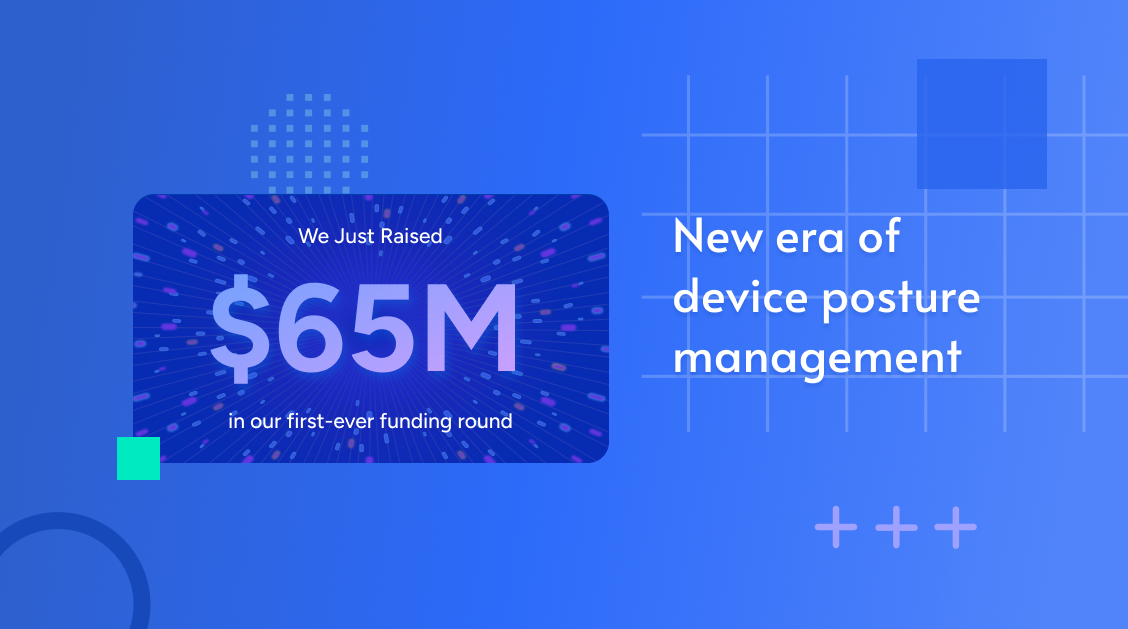Security leaders invest heavily in the front door: phishing defenses, malware de...
Outcome-Driven Metrics: Making Cybersecurity Make Cents

If a threat falls in the SOC and no one ties it to revenue, does it really make a sound? That’s the challenge security leaders face every day: finding an impactful way to translate cyber risk into the business' bottomline and aligning protection with performance.
But in today’s risk-soaked, board-scrutinized world, silence isn’t just missed opportunity — it’s a missed signal. And when those signals don’t translate into business language, security ends up sounding like background noise.
It’s like a game of broken telephone where the crucial connection between risk and revenue gets lost along the way. Security leaders keep trying to prove their value with stories about what didn’t happen: the attack that never landed, the outage that never hit, the breach that never made headlines. And on a technical level, they’re right. The controls did their job.
But for most business leaders, already swamped with their own tasks and unfamiliar with (or perhaps even apathetic to) reality of our current threatscape, “it could’ve been worse” doesn’t feel like ROI on their investment in cybersecurity. It doesn't count as business impact. And "nothing happened" sure doesn’t show up in a quarterly report.
A common side affect? When the business can’t see what the security team is protecting or why it matters, apathy can set in and investment may dry up.
This disconnect often stems from how cybersecurity performance is measured and communicated. Common metrics like tool deployment rates or alert volumes look impressive on paper, but they don’t answer one of the most important questions. As Gartner puts it:
“Technical metrics that are lagging indicators of risk do not reflect protection levels and do not guide investments. For example, the number of malicious files or phishing emails blocked is not connected to how well the organization is protected..."1
Indeed, the numbers most dashboards track may be loud, but they don’t tell you whether you’re actually safer. However, Outcome-Driven Metrics (ODMs) shift the conversation to impact.
This is because outcome-driven metics measure protection in quantifiable business-relevant terms, such as:
- How fast misconfigurations are caught (Mean Time to Detect [MTTD]) and fixed (Mean Time to Resolution [MTTR])
- What percentage of endpoints have drifted from the approved baseline
- How consistently endpoint protection tools are running
- What portion of known attack techniques are currently mitigated
These are the metrics that actually matter when you’re in front of your board. As Gartner wisely explains:
“Outcome-driven metrics are indicators of protection levels. When an outcome-driven metric improves, the organization is measurably more protected. When an outcome-driven metric worsens, the organization is measurably less protected.”1
This is exactly what enables security teams to align with leadership and make risk-informed decisions based on actual protection.
Outcome-Driven Metrics Turn Device Hygiene Into Value
You can’t talk about outcome-driven metrics without talking about endpoints. They’re not just entry points for attackers; today, they’re ground zero for protection performance. And they’re where cyber investments start to show returns… or gaps.
Yet most security teams can’t measure or effectively communicate how protected their endpoints actually are or what that protection is costing your organization. That is an unfortunate but common missed opportunity, as understanding how to tie endpoint health to measurable outcomes is critical for communicating the value of a strong security posture.
Let’s say you're the CISO at a mid-sized financial services firm with a hybrid workforce and high regulatory pressure. You've been tasked with improving endpoint security, but have a tight budget, minimal appetite for user friction, and growing board scrutiny.
Knowing what to measure is a start. But if you want real accountability and real alignment with leadership, you need to turn those metrics into commitments and translate the benefits into the language of business leaders, not security teams.
Consider that you will need to be able to answer clearly:
- Are the controls delivering the protection we paid for?
- Can that protection be proven (and explained) in a way the business will actually care about?
- Are we measurably safer today than we were yesterday?
That’s where Protection-Level Agreements (PLAs) come in. Part metrics, part manifesto, they take "trust me, we’re protected" and turn it into "here’s what we expect, what we can commit to given the circumstances, and what it costs."
PLAs move the conversation from vague objectives to measurable outcomes. Rather than debating tools or budget line items, leadership aligns around acceptable risk, expected protection levels, and investments required.
.png?width=689&height=172&name=protection-level-agreements-level-of-protection%20(1).png)
And when you combine outcome-driven metrics with protection-level agreements, you’re no longer just reporting security activity; you’re setting clear expectations and delivering business value.
Maybe you define a PLA with leadership that outlines both expected outcomes and acceptable cost. An example of a plan could be:
- By Q4, we will achieve and maintain the following protection levels:
- 95% of corporate endpoints will meet the approved security baseline
- Endpoint protection tools will maintain 98% operational uptime
- Misconfigurations will be detected and remediated within 48 hours on average
- This will require reallocating $120K from legacy antivirus licensing to configuration drift detection and endpoint telemetry improvements.
Now, you’re reporting outcomes that matter to business leaders, and in language they can appreciate based on a quantified protection level and cost-to-value ratio.
The next step? Drive execution and communicate progress. Baseline current performance using endpoint telemetry and config validation tools. Automate reporting for your outcome-driven metrics. Detect configuration drift on endpoints using automated tools and measure your MTTR week over week.
When one metric dips, say the percentage of endpoints compliant with the approved security baseline falls below 90%, you flag the deviation, investigate the cause (for example, recent misconfigurations due to a policy change), and propose a fix (such as updating the configuration management process and retraining the IT team).
This way, you quickly identify gaps caused by misconfigurations and configuration drift, and take targeted action to restore a secure, consistent environment.
And that's how you show meaningful movement, not just activity.
The Boardroom Whisperer: What Your Security Stack is Missing
Being able to talk dollars and cents has become a major part of security leaders' roles; I've seen how one of CISOs' greatest challenges is presenting to the board simply because the language of protection rarely matches the language of profit. It's about telling a story of avoided costs, wins, and eliminated risk, and quantifying what it all means for your organization.
This is exactly where Remedio becomes a force multiplier. It gives security teams the ability to measure, manage, and communicate protection in business terms — not technical jargon.
To help drive this point home, Remedio includes a built-in ROI calculator that tracks how much time has been saved across remediation, compliance, and operations, then translates those savings into dollar values using FTE cost estimates. Now you’re not just buying protection — you’re tracking it like an investment portfolio, with real returns in dollars and hours saved.
Take the City of Phoenix, for example. Within 30 days of deploying Remedio, they reduced their attack surface by 83%, improved IT and security productivity by 480%, and cut remediation time by 77%. Those aren’t just technical wins — they’re quantifiable business outcomes that leadership can immediately understand and act on.
And in highly regulated industries like healthcare, the value is just as clear. At the University of Kansas Health System (UKHS), CISO Michael Meis shared how Remedio helped reduce organizational risk by over 30%, and saved thousands of hours by automating misconfiguration detection and remediation.
Instead of debating tool coverage or compliance gaps, Meis could confidently show progress in terms that mattered to his board: faster resolution, tighter security baselines, and improved operational continuity.
Both the City of Phoenix and UKHS exemplify the type of boardroom-ready metrics any security leader would love to add to a quarterly report. Remedio enables organizations to build a reliable foundation for outcome-driven metrics and protection-level agreements by continuously validating configurations, reducing drift, and surfacing the exact data needed to prove and improve — protection.
It helps transform misconfiguration hygiene from a hidden liability into a strategic advantage, ensuring that security isn't just working, but working in a way that (clearly) moves the business forward. And perhaps just as importantly, it gives you the ability to easily share your wins in language that the boardroom can get behind.
_____
- Gartner, Use Outcome-Driven Metrics to Drive Value for Endpoint and Workspace Security, 25 July 2025.
About Author

Bar Bikovsky
Subscribe to
our Newsletter
We are ready to help you until and unless you find the right ladder to success.
Related Posts
Join over 25,000 in beating the failure of strategies by following our blog.
Picture the legendary Metropolitan Opera House on opening night. The air hums wi...
6 minute read
In cybersecurity, the smallest missteps can lead to the biggest breaches. Take B...
3 minute read
Active Directory (AD) is the powerhouse of the enterprise — the central hub wher...







Comments